In recent years, Americans have been on the hunt for wholesome, low-calorie, and nutrient-packed ingredients that add flavor and crunch without compromising health goals. Enter jicama (pronounced HEE-kah-ma), the crispy, slightly sweet root vegetable that’s been a staple in Mexican cuisine for centuries. Known for its juicy texture and refreshing bite, jicama is rapidly gaining popularity across the U.S. — from trendy salad bars to high-end restaurants and home kitchens alike.
This article dives deep into what makes jicama so special — its origins, health benefits, cooking uses, and why it deserves a spot in your weekly grocery haul.
What Is Jicama?
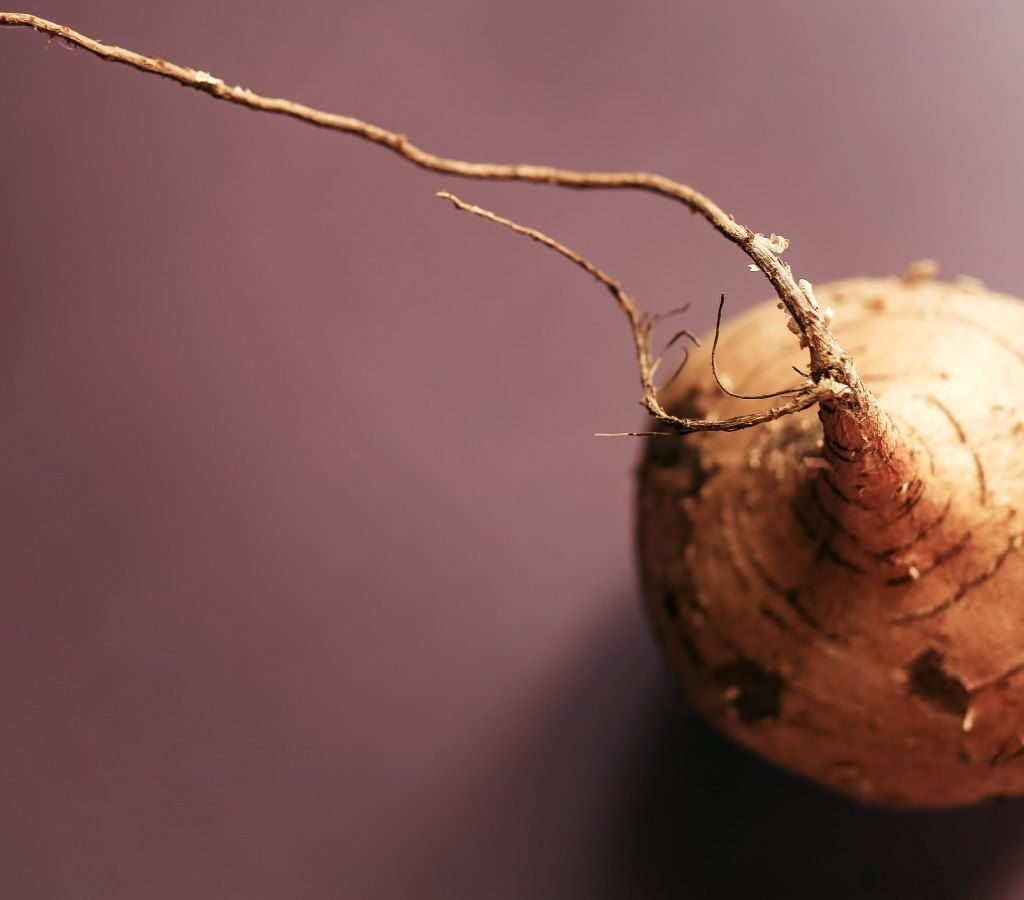
Jicama, scientifically known as Pachyrhizus erosus, is a root vegetable native to Mexico and Central America. It’s sometimes called the Mexican yam bean or Mexican turnip, though it tastes nothing like either. The exterior is rough and brown, resembling a turnip or potato, but slice it open and you’ll find a crisp, white flesh that’s refreshing and mildly sweet.
What sets jicama apart from other roots is its unique texture — crunchy like an apple yet moist and starchy like a potato. It’s most often eaten raw, but it can also be sautéed, baked, or stir-fried without losing its satisfying crunch.
Nutritional Profile: A Low-Calorie Powerhouse
One of the biggest reasons jicama has become a darling of the health-conscious crowd is its impressive nutrition profile. A one-cup serving of raw jicama (about 130 grams) provides:
- Calories: ~50
- Fiber: 6 grams
- Carbohydrates: 12 grams
- Protein: 1 gram
- Fat: 0 grams
- Vitamin C: 40% of the daily recommended intake
- Potassium, magnesium, and iron: Moderate amounts
Jicama is naturally low in calories, fat-free, and cholesterol-free — making it a perfect choice for anyone following weight-loss, low-carb, or diabetic-friendly diets.
Top Health Benefits of Jicama
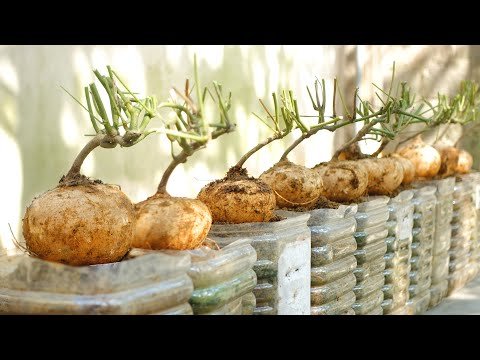
1. A Fiber Champion for Gut Health
Jicama is loaded with dietary fiber, particularly a prebiotic fiber called inulin, which helps feed beneficial gut bacteria. A healthy gut microbiome supports better digestion, immunity, and even mood regulation. Including jicama in your meals can help keep your digestive system balanced and your metabolism efficient.
2. Boosts Immune System
With nearly half of your daily vitamin C in just one cup, jicama strengthens your immune defense against common colds, flu, and oxidative stress. This antioxidant also aids collagen production, promoting youthful skin and joint health.
3. Helps Manage Weight Naturally
The combination of fiber and water in jicama promotes fullness, reducing overeating and snacking. Since it’s low in calories but high in crunch satisfaction, it’s a great alternative to chips or crackers when you crave a snack.
4. Keeps Blood Sugar in Check
Thanks to its low glycemic index, jicama doesn’t cause rapid spikes in blood sugar levels. Its inulin content also helps stabilize glucose response, making it an excellent addition to diabetic-friendly meal plans.
5. Supports Heart Health
The potassium in jicama helps regulate blood pressure, while its fiber assists in lowering LDL cholesterol. Together, these nutrients support cardiovascular health and reduce the risk of heart disease.
How to Select and Store Jicama
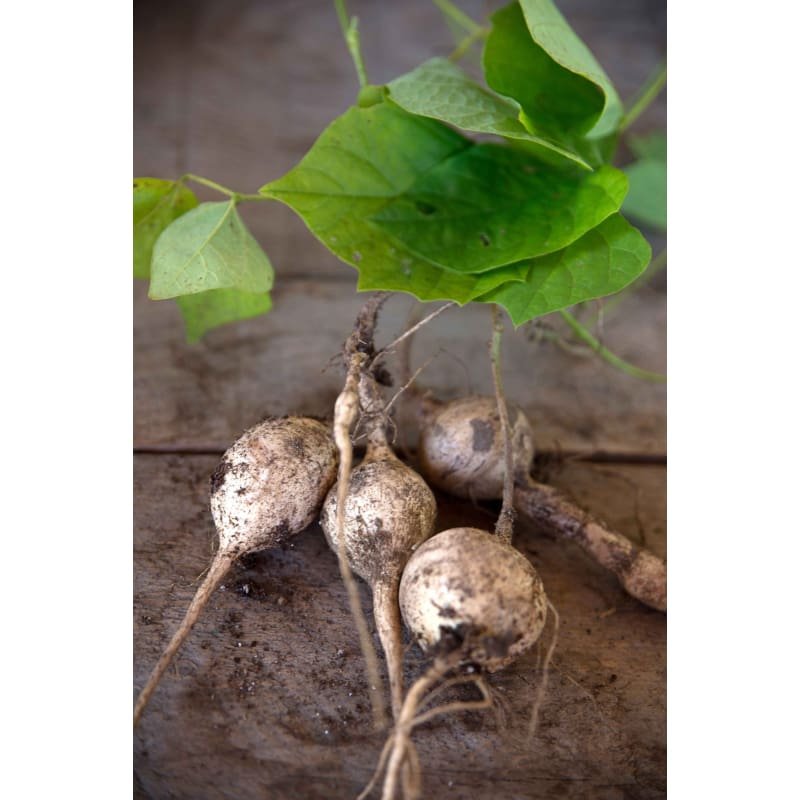
When shopping for jicama, look for firm, round tubers with smooth, unblemished skin. Avoid any that are soft, shriveled, or moldy.
Store whole jicama in a cool, dry place for up to two weeks, similar to potatoes. Once peeled or sliced, keep it in an airtight container in the refrigerator for up to a week — just make sure to keep it dry to preserve its crispness.
How to Prepare Jicama: Simple and Delicious Ways
1. Enjoy It Raw
The most popular way to eat jicama is raw. Peel off the tough brown skin with a knife or vegetable peeler, then slice the white flesh into sticks, cubes, or matchsticks. Sprinkle with a pinch of salt, lime juice, and chili powder for a refreshing and authentic Mexican snack.
2. Toss It in Salads
Add thin slices of jicama to green salads, fruit salads, or slaws. It pairs beautifully with citrus fruits, avocado, cucumber, and leafy greens. The crunch factor adds a new level of freshness to every bite.
3. Use It as a Healthy Dip Stick
Move over, celery and carrots — jicama sticks are the new go-to for hummus, guacamole, or Greek yogurt dips. Its neutral flavor complements just about any dip.
4. Add It to Stir-Fries
Although most people eat it raw, jicama also holds up well in light stir-frying. Its mild sweetness enhances Asian-inspired dishes without becoming mushy. Just toss it in during the last few minutes of cooking.
5. Bake Jicama Fries
Craving French fries but watching your carbs? Slice jicama into wedges, toss with olive oil, paprika, and garlic powder, then bake at 400°F (200°C) for about 25–30 minutes. The result: crispy, golden, and guilt-free fries!
6. Make Refreshing Summer Salads
Combine jicama cubes with mango, pineapple, and a squeeze of lime for a tropical fruit salad that’s both hydrating and energizing — a perfect choice for warm weather picnics.
Jicama in Mexican and American Fusion Cuisine
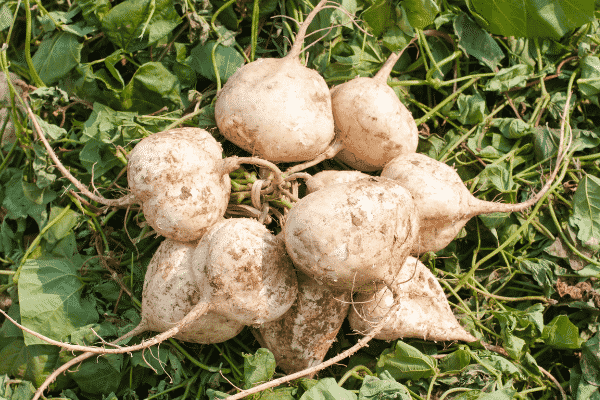
In traditional Mexican cooking, jicama is often served raw with lime and chili powder, tossed in fruit cups, or featured in street snacks like “pepino con chile” (cucumber and chili mix).
In the U.S., chefs are creatively incorporating jicama into:
- Fish tacos for an extra crunch
- Slaws for BBQs and cookouts
- Wraps and lettuce cups as a low-carb filler
- Smoothies for added fiber and subtle sweetness
Its versatility makes it a perfect bridge between Mexican authenticity and modern American healthy eating trends.
Fun Facts About Jicama
- Jicama plants grow best in warm, tropical climates, but only the root is edible. The leaves and seeds are toxic if consumed raw.
- It’s 85–90% water, making it one of the most hydrating vegetables you can eat.
- In Mexico, it’s a popular addition to holiday dishes like Christmas salads (ensalada navideña) and festive appetizers.
- Jicama can last longer than most root vegetables due to its thick protective skin, perfect for meal prep enthusiasts.
Why Jicama Deserves a Place in Every American Kitchen
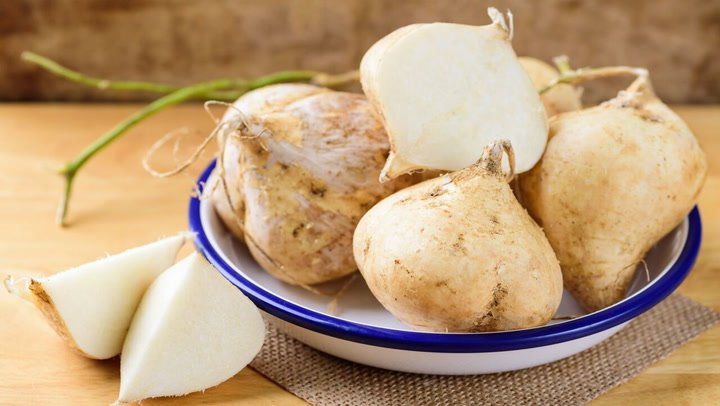
From boosting digestion to adding satisfying crunch to your meals, jicama checks all the boxes for a superfood ingredient. It’s gluten-free, vegan, keto-friendly, and diabetic-safe — truly a universal food for modern lifestyles.
Its mild flavor and crisp texture make it endlessly adaptable, while its nutrition benefits support heart health, weight control, and immunity. Whether you’re a busy parent, fitness enthusiast, or plant-based foodie, jicama offers a refreshing and nourishing upgrade to your weekly menu.
Conclusion: Crunch Into Good Health with Jicama
Jicama isn’t just a trendy root vegetable — it’s a nutritional gem that embodies everything modern American eaters love: flavor, health, and versatility. Its rise in popularity is no surprise given its ability to transform salads, snacks, and main dishes with just a few crunchy bites.
So next time you’re shopping for fresh produce, skip the routine carrots or potatoes and pick up a jicama instead. Your taste buds — and your gut — will thank you.
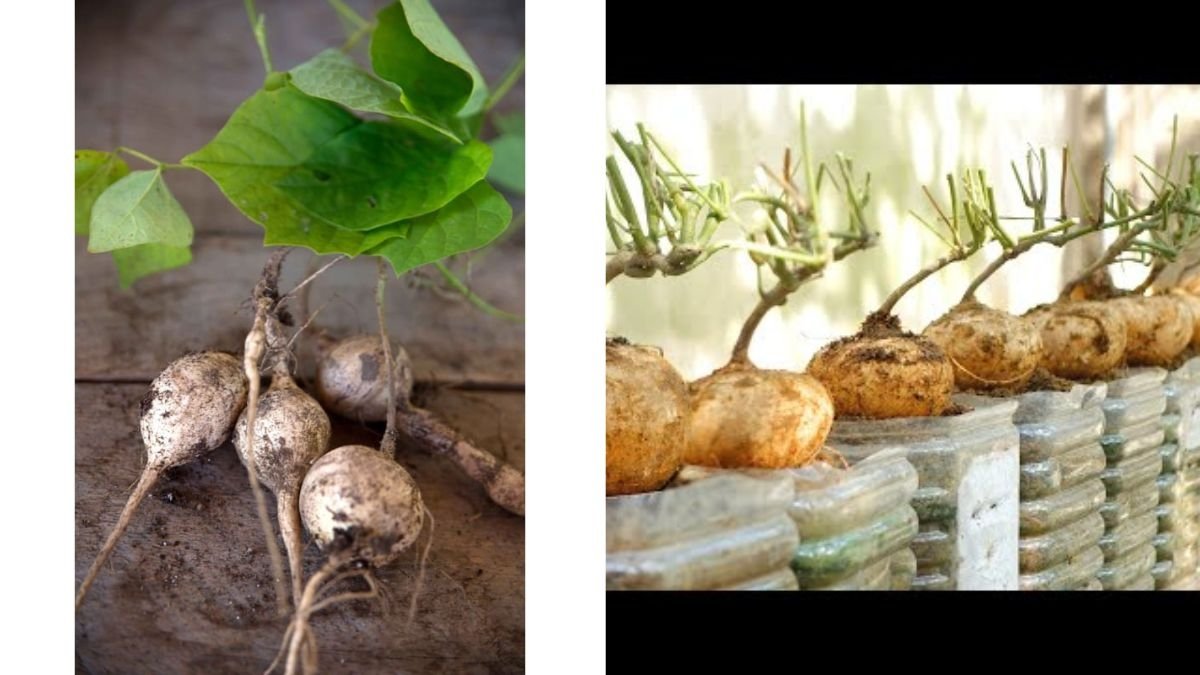





Leave A Comment